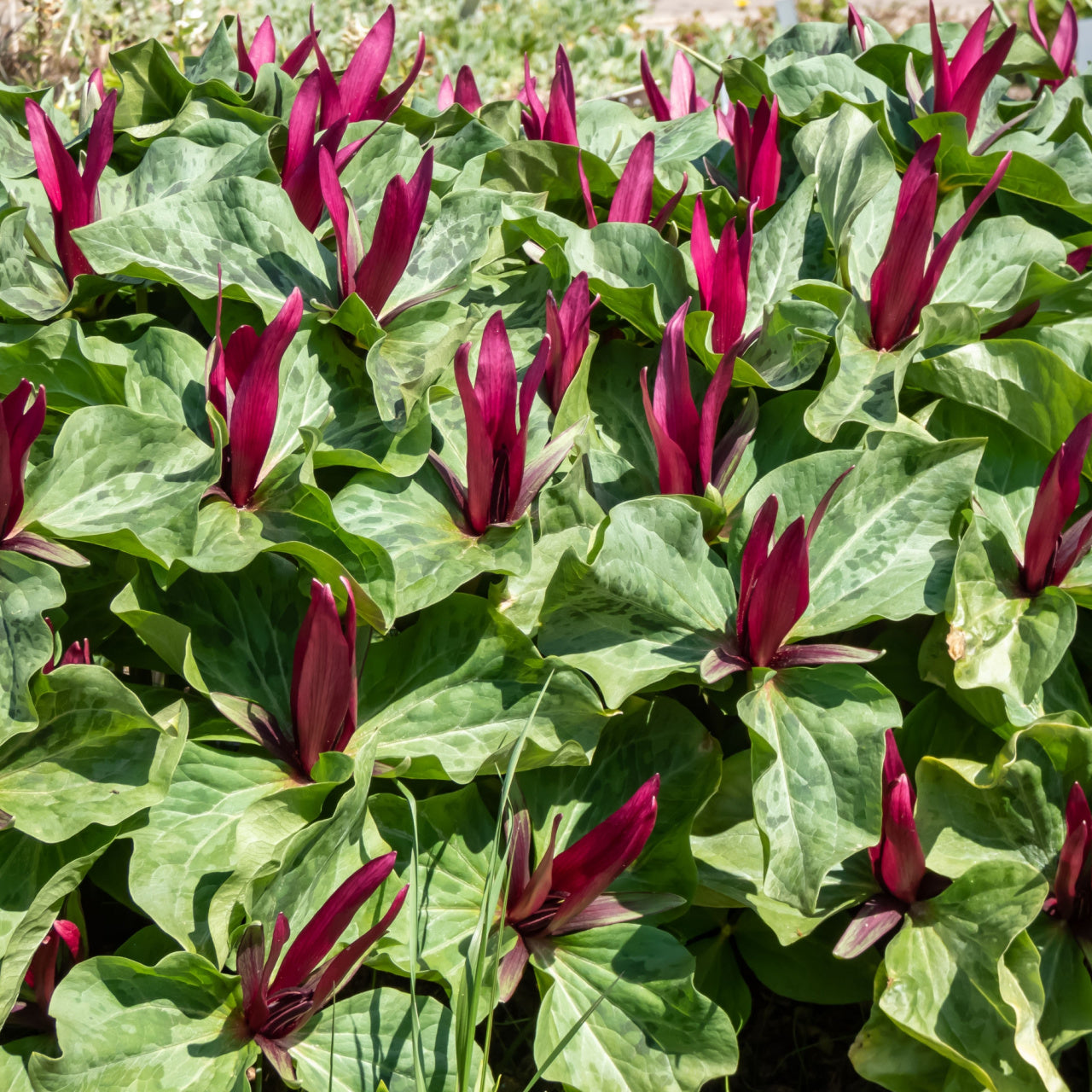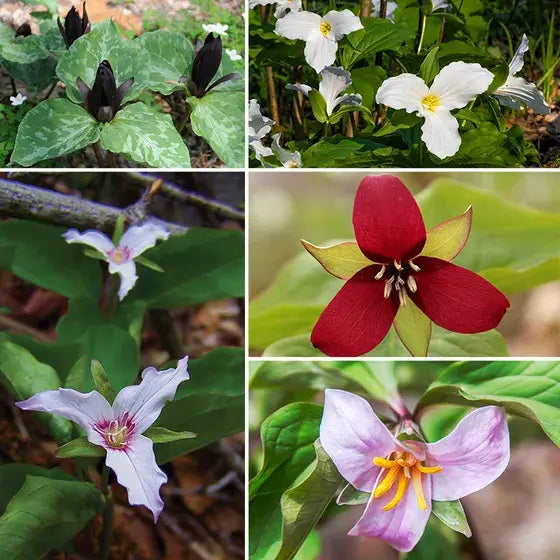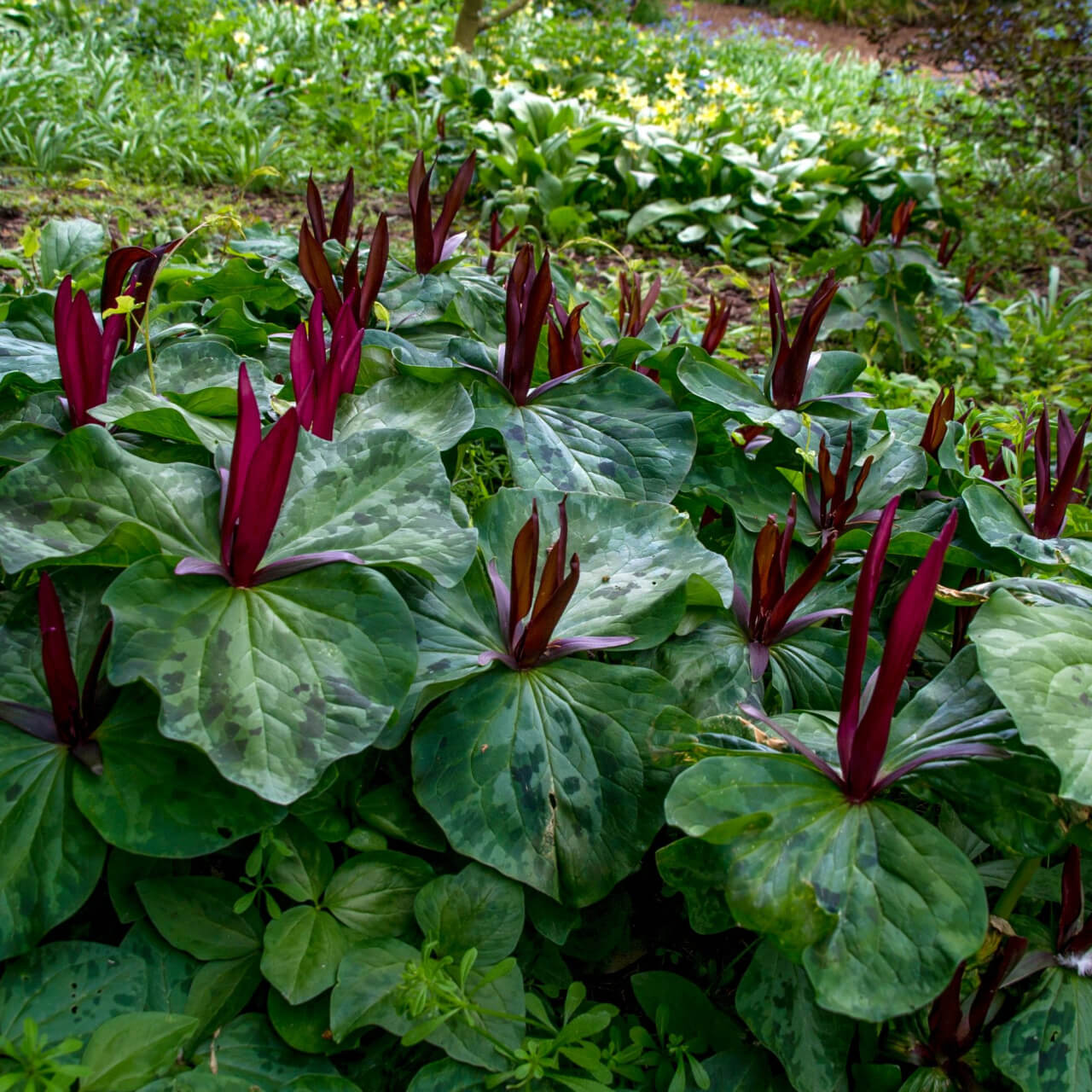Colorful Trillium Plants for Sale
Trillium Plants are a genus of perennial plants belonging to the Melanthiaceae family. Known for their distinctive three-petaled flowers, they are highly sought after in landscaping due to their beauty and versatility. Numerous perennials exist, each with unique characteristics and uses. This article will explore some of the most popular species and how they can be incorporated into landscaping designs.
Trillium Plants Are The First To Bloom In Spring
When you see the first bloom, you'll know Spring is coming. This wildflower appears in March and blooms in April in North America. Although it is a member of the lily family, you may hear it called by other names, such as birthroot, birthwort, or Indian balm. There are approximately 30 species of birthroot.
In the wild, these flowers spread through seeds carried by ants. When the seeds take root, they form an underground root system, and the stems remain in the soil. This wildflower produces flowers with three petals and bracts. Some varieties of birthroot feature large flowers up to four inches wide, while others produce smaller flowers.
Trillium Plants Are Available In Many Colors
One of the most popular varieties in the Colorful Trillium Collection of this wildflower is T. grandiflorum. This flower produces a large blossom up to four inches wide. Approximately one week after the flower opens, the petals change color. The flower changes from bright to light pink. As the flower fades, the pink changes to a dark rose color. Since the blossoms open at different times, gardeners may enjoy shades of pink and rose all at once.
Trillium Plants Are Great Additions To Woodland Gardens
Another variety is T. erectum. This wildflower, or Wake Robin, features burgundy petals with bright green leaves. This variety can spread to 12 inches wide and grow up to 18 inches tall. T. undulatum produces a single, beautiful bloom above whorled leaves. The bloom features petals with a bright red center. Like other varieties, T.undulatum grows 18 inches high and 12 inches wide. This stunning flower can add some variety to your yard.
Creating a Colorful Garden with TN Nursery
No matter which variety you choose, this Colorful Trillium Collection are a great addition to any garden or yard. These beautiful flowers add color and height to any wildflower garden. Gardeners can mix and match different varieties to create a natural look that varies in height and color.
Exposure
Trillium thrives in partial to full shade, making it ideal for woodland gardens. It prefers dappled sunlight and does well under trees' canopy. Avoid direct sunlight, as too much exposure can stress the plant and hinder its growth.
Height at Maturity
Over 12"
Usage
Flowering
Shipped As
Bare-root
Ships
USPS
Planting Zones
4-9




